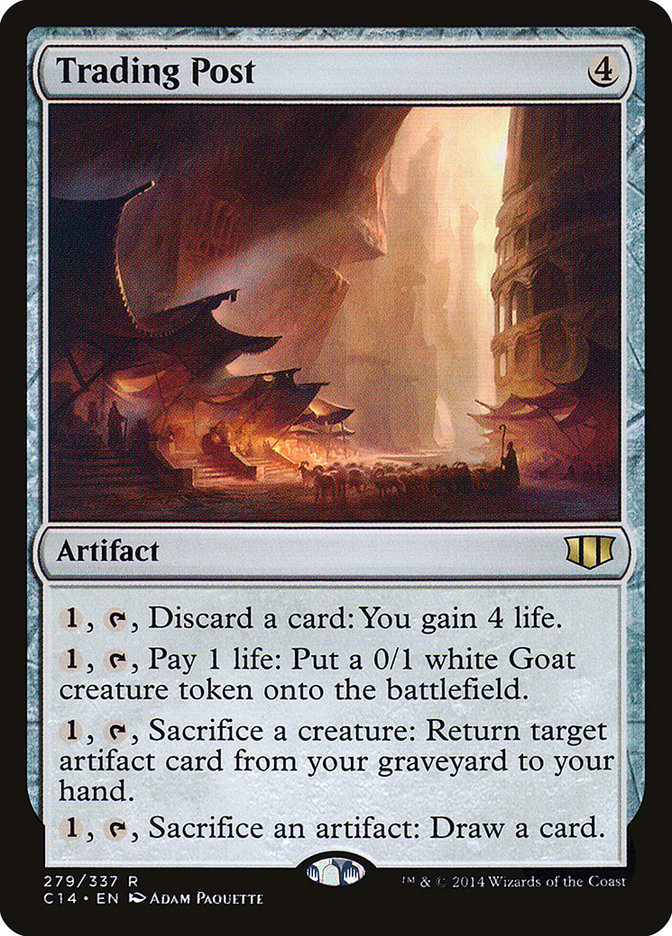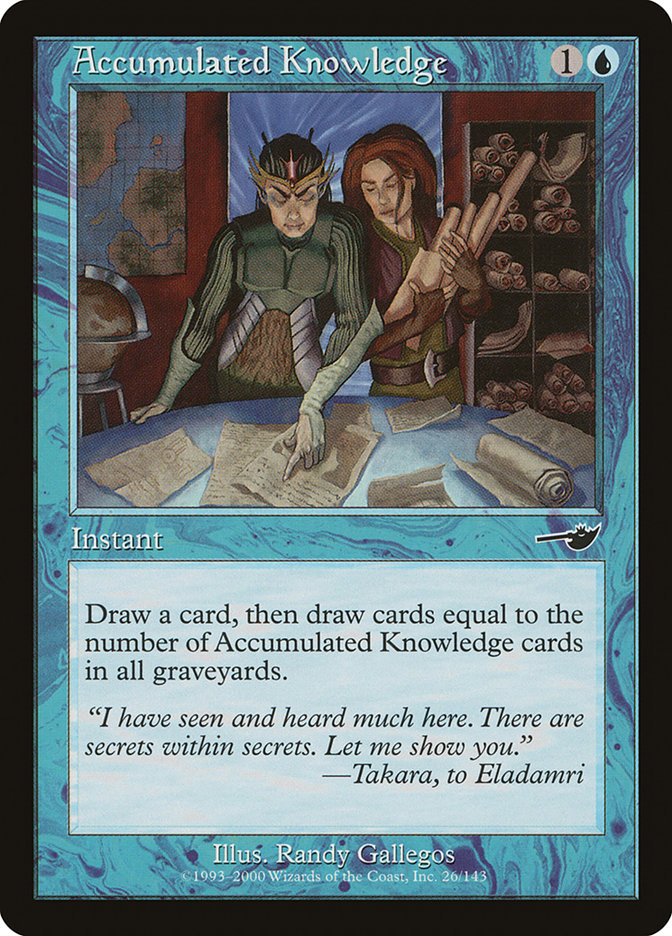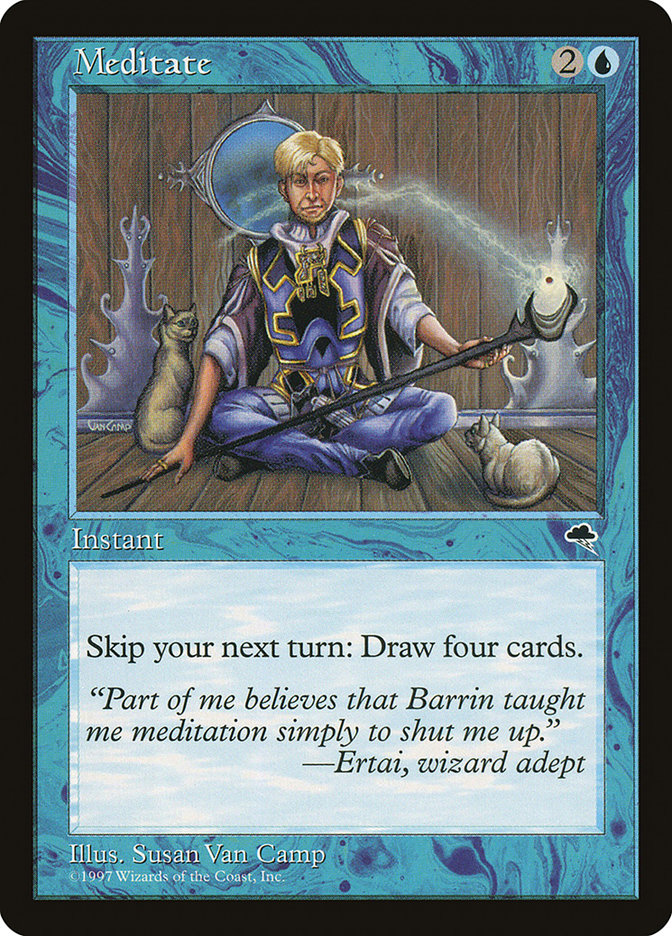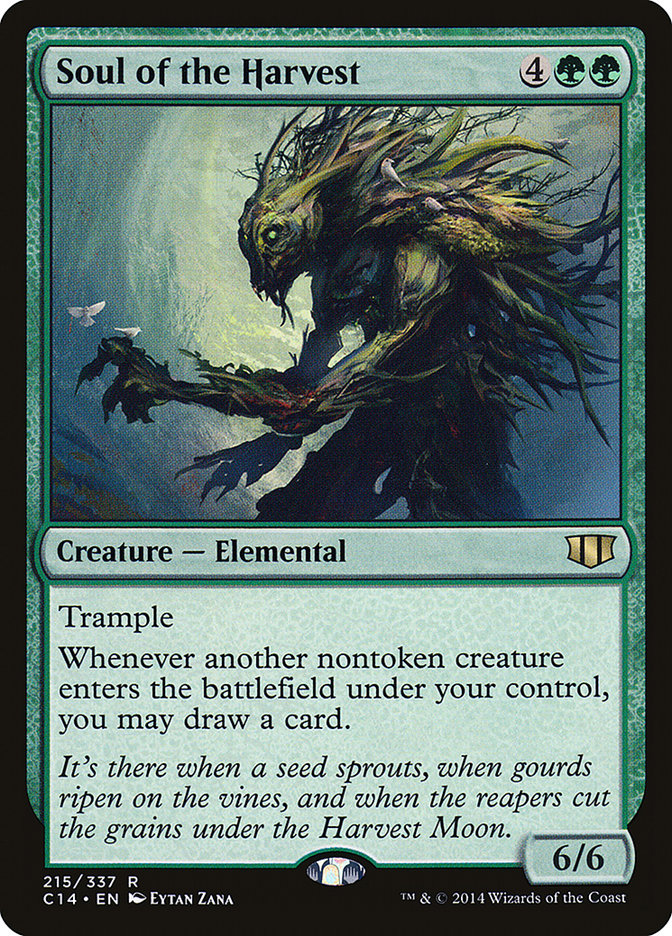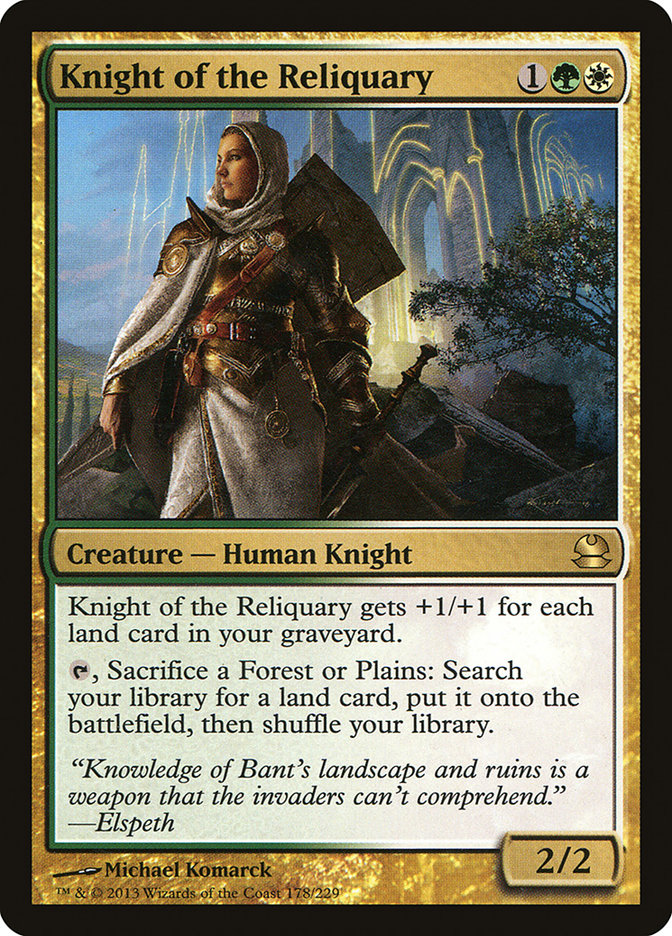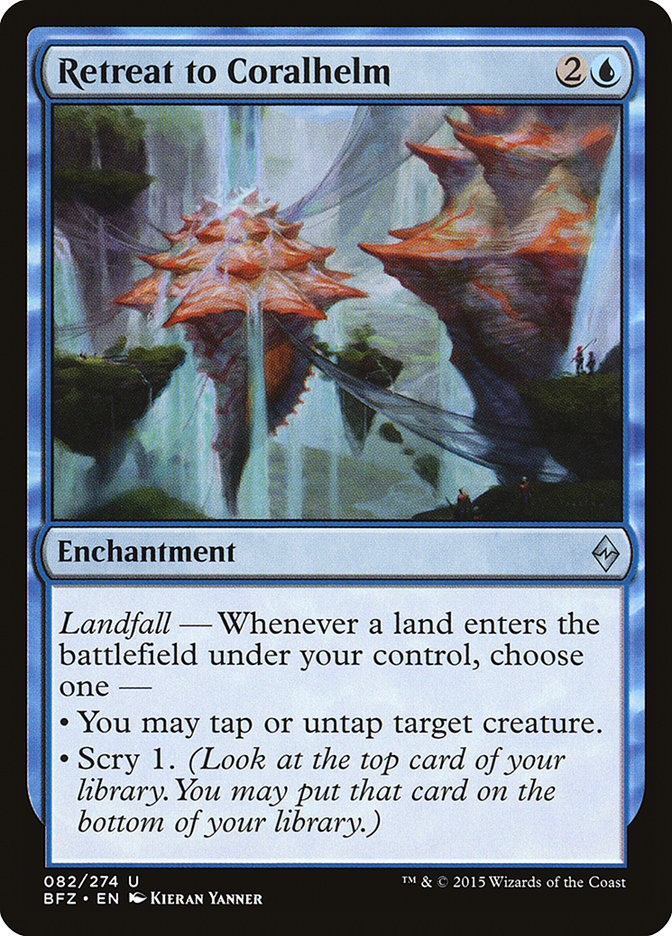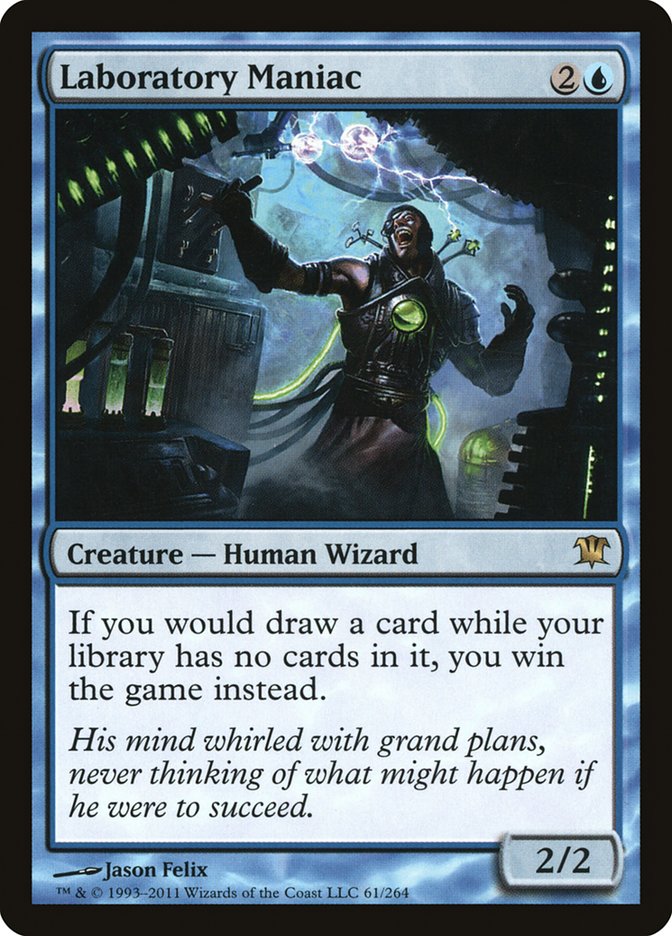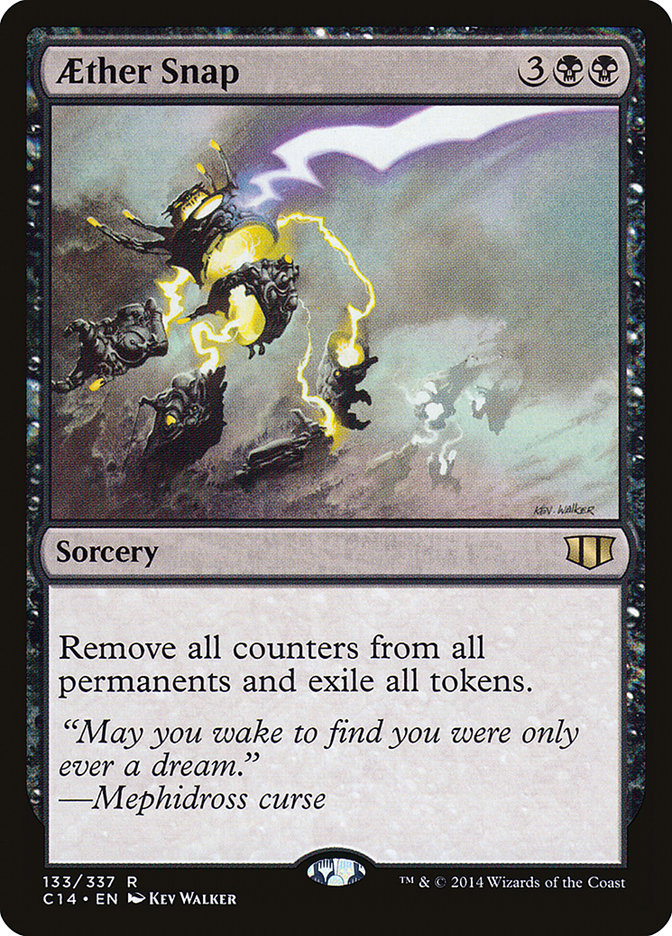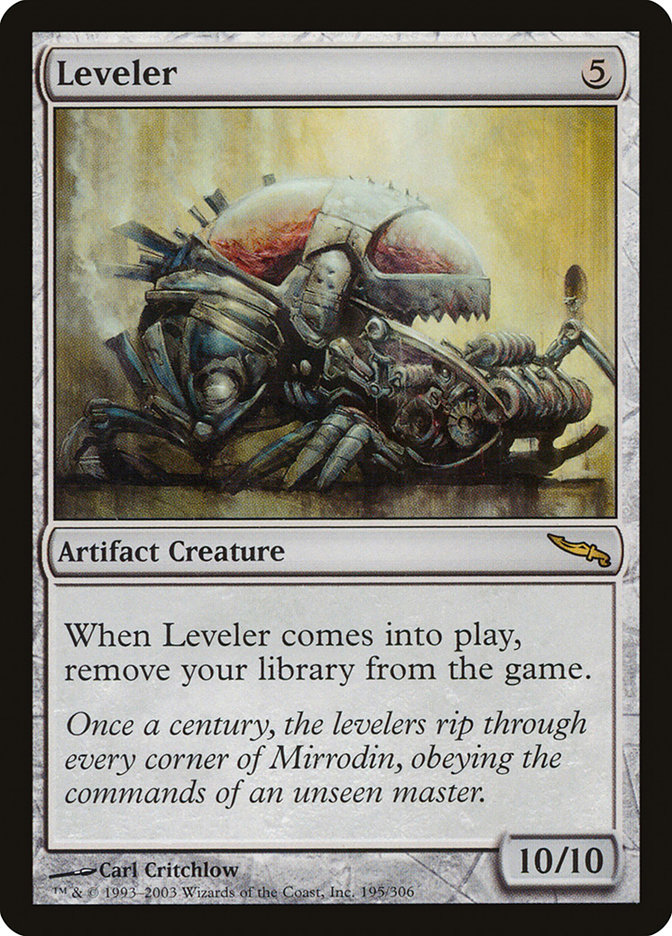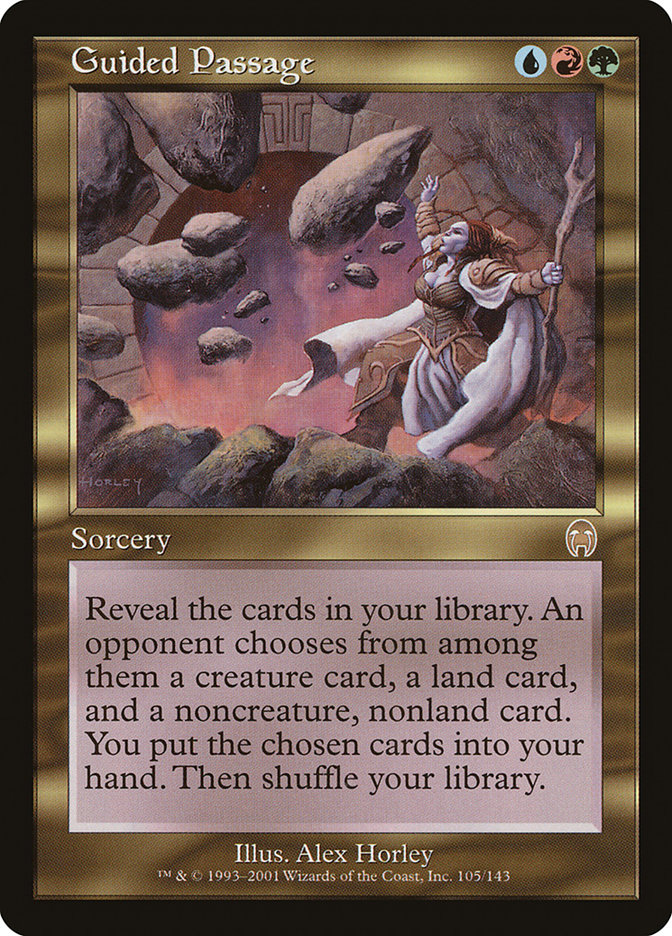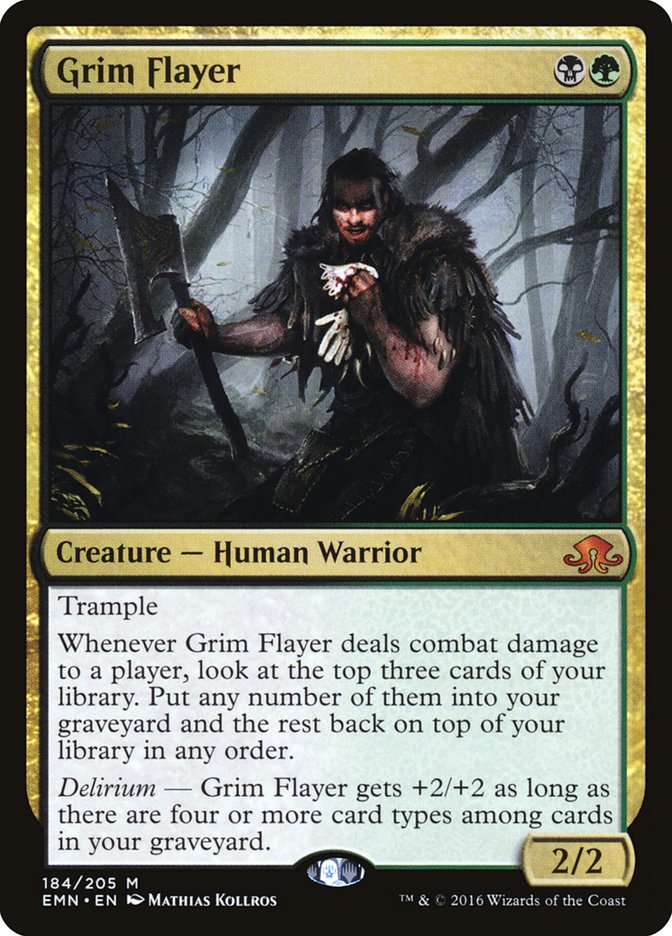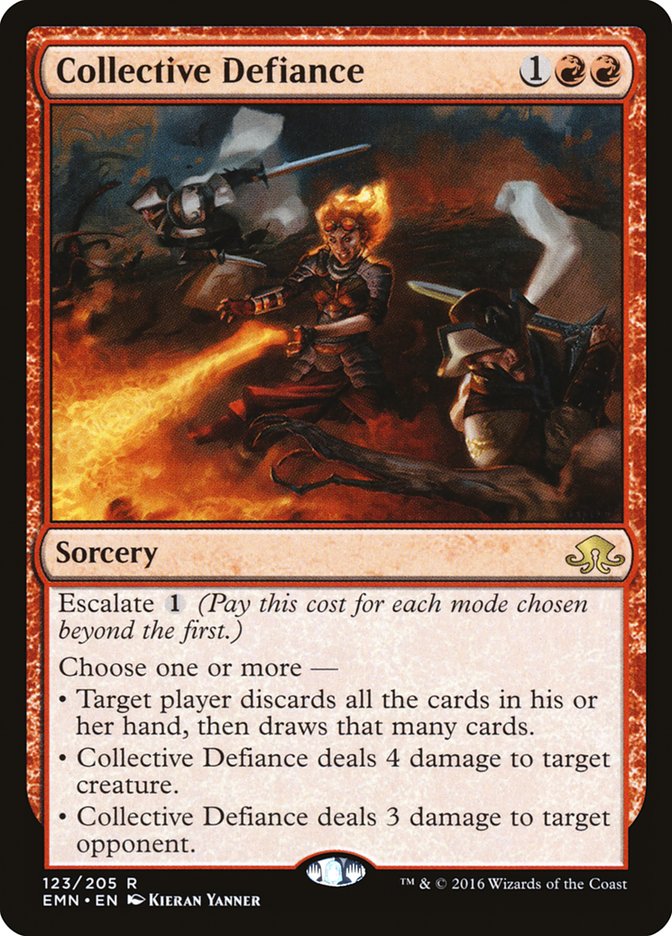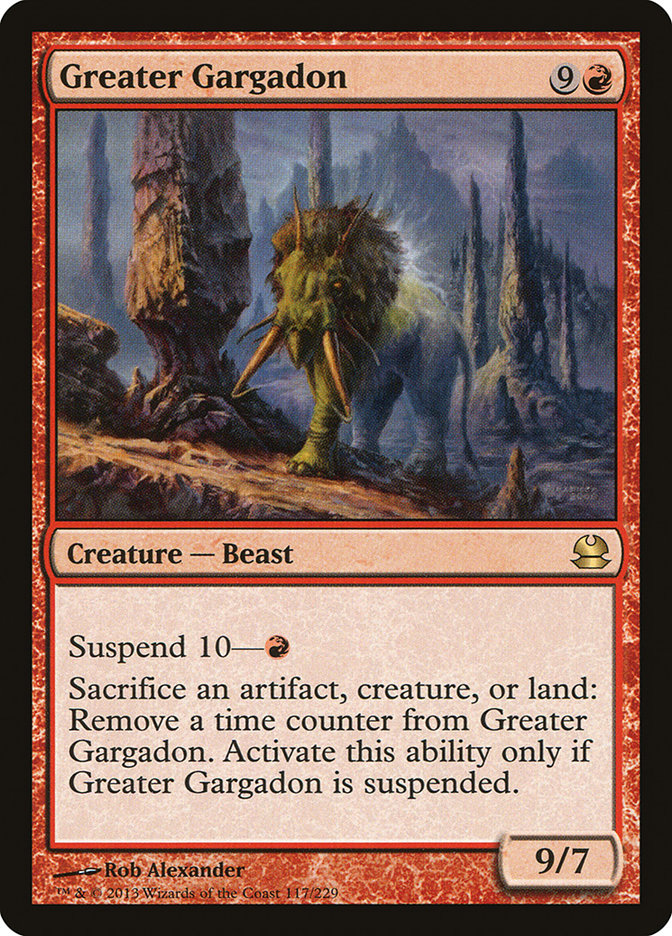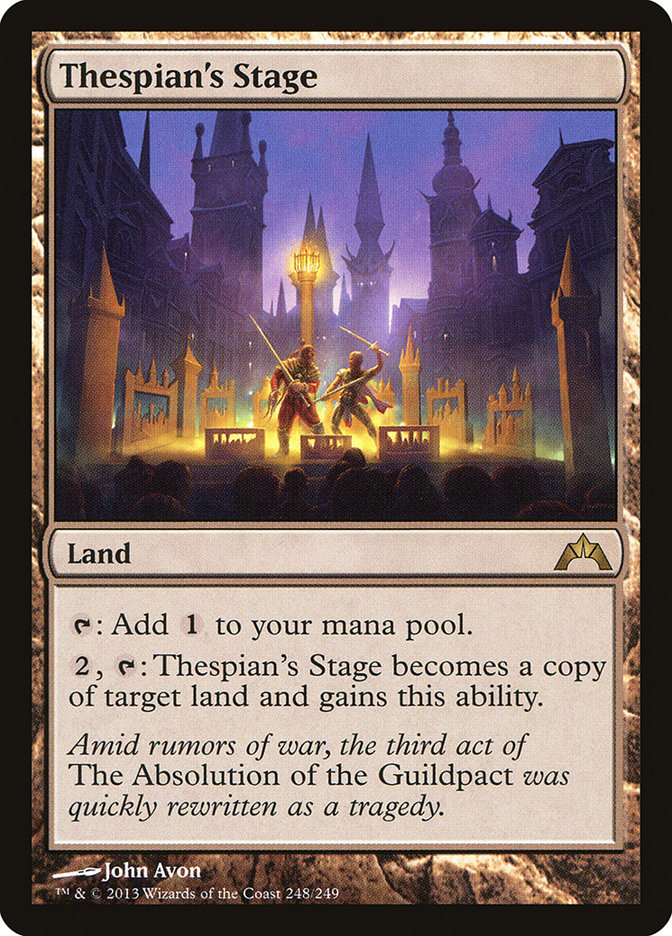Everyone who has traveled with me to a Grand Prix knows about my legendary love of the dollar bins.
Oh, sure, on the car ride up everyone says that they’ll spend some time digging through the bargain bins with me, but most of them give up by the third or fourth vendor. They’ll make up some excuse about how the line for rk post is really short right now and I won’t see them again until the middle of the afternoon.
None of them ever want to hit the same boxes again the next day, even when I remind them that a lot of the better deals show up once the vendors realize that they need to keep the boxes full all weekend and just start shoving stuff in there. Ten dollar rares for a quarter? Mythic foils at four for a buck? I find at least a few at every event I attend.
The tricks to victory at the bargain bins? Planning, patience, knowledge, and scaling. Let’s hit each point one at a time.
Planning: If you are just planning to buylist the cards you find, you’ll almost certainly make a better hourly rate by figuring out what each vendor is paying on in-demand cards and hitting the ol’ trade binders. The bargain bins are most effective when you have another goal in mind—finishing that bulk rare Cube, say, or finding weird foils for your casual Treefolk deck. Know that you are going to come face-to-face with every low-value rare from the past ten years and figure out what you’re after beforehand. That way, you’ll have a couple of smaller goals that will keep you motivated during the long search.
Patience: How many bargain bin cards are actually worth buying? In the best box you’ll ever find, your odds of hitting are still about one in each hundred cards. In a picked-over box, your odds are closer to one in one thousand. In many boxes, you won’t find anything at all. That’s why most people give up after the first vendor or two.
How can you combat this? A positive attitude helps. Beyond that, stay hydrated, wear comfortable shoes, and basically do whatever you would do before running a 5K. Oh—and take a break once your fingers start to hurt!
Knowledge: Every time you paw through a bargain bin, you are essentially entering a battle of wits against the vendor who stocked it. While some dealers will hide a couple of gems in the box in order to stimulate sales and others just want to blow out slightly more valuable cards that they have a ton of in stock, most don’t actually want to sell valuable cards for a dollar or less. For you to come out on top, you’re going to have to search out cards that aren’t bulk despite the vendor having believed they were.
Obscure Commander cards tend to be my biggest find, and I’ll often do well with older non-English cards that showed up in the back of someone’s collection and got shuffled into the bulk without getting looked up and properly priced. Recently spiked cards are also worth searching out, though the competition for these is often fierce and the vendor may not honor their pricing if you try to buy too many of these. If you’ve got close to a photographic memory for Magic cards and their current prices, you’ll do well here. If you have to stop every couple flips to check a price, this might not be the exercise for you.
Scaling: Not all bargain bins are created equal, and you cannot treat them all the same. Actual dollar bins are the worst—if you’re planning to re-sell cards you buy for a buck each, you’d better have a way to buylist them for at least $1.50 or sell them online for at least $3. I tend to spend the least amount of time at these, but because they are less popular they can often be the best place to find an underpriced gem.
The best bins at any given Grand Prix sell cards at five for a dollar. I’ll sometimes buy 50 or 100 cards from these vendors, including things I’d never have considered at a buck. Since Star City Games will pay $0.10 each for any Near-Mint bulk rare regardless of how lousy it is, you are essentially paying a $0.10/card speculation fee for the chance that any of these buys will spike and pay off at some point in the future.
I have several 5,000-count flat rows filled with cards like these that I farm for value every couple of years. In these bins, I don’t just look for cards that are worth more than twenty cents—I look for cards that I believe will be worth more than twenty cents at some point in the future.
What Sorts of Cheap Rares Are Worth Targeting?
I’ve written extensively about bulk rare speculation before, so I don’t want to repeat myself too much here. In truth, you can correctly evaluate the future of most bulk rares based on the following three metrics:
Age: There are basically three eras of bulk rares worth worrying about: pre-Zendikar, Zendikar through Avacyn Restored, and Return to Ravnica onward. Anything from the first era has a shot at double digits if it becomes relevant, but nearly all the promising cards have already spiked, so your hit rate on these will be very low. Cards from the second era are more promising and are probably in the sweet spot for bulk rare speculation right now, but they still might take a couple of years to pan out. There are loads of interesting cards from the third era out there, and you will come across dozens of copies of each in every bulk bin. The current supply vastly outpaces demand, so it’s going to be a long time before you’ll be able to cash out.
Combo Potential: Commander play is all well and good, but the dream is to find an unheralded rare that ends up as part of some crazy combo in Modern. The good news is that these cards tend to be popular in Casual circles as well, giving you twice as much of a chance of making money.
Cards That Are Very Good at What They Do (Even If That Thing Is Bad and/or Weird): Limited-only creatures that can take over a Draft game need not apply. Flavor-of-the-month finishers and removal designed solely to balance out Standard should be avoided. What you want are cards that kick butt at what they set out to do, whatever that is. Is this card the absolute best at making some weird kind of artifact counter plan work? Does it straight-up win the game under some weird set of circumstances? Can it tutor for some tiny subset of things that are all currently worthless? Sign me up.
But Wait – Are Dollar Rares Still Worthwhile?
This question actually deserves some real attention. Back when Commander was transitioning from a homebrew format to a sanctioned way to play, cards would spike from $1 to $10 all the time. The same thing happened during the early days of Modern, when the player base was exploding in size and new uses were constantly being found for old spells.
But cards are being printed at much higher rates these days, reprints are everywhere, and fewer bargains slip through the cracks. Is it possible that the tried and true model of “buy a bunch of promising cheap cards, hold them for a long time, and then flip the ones that spiked” is no longer effective?
The good news is that I wrote an article in April of 2015 that included a whopping 51 sub-$1 spec picks. Let’s take a look at what those cards are doing now and see if my advice was any good, shall we?
Dropped In Price:
· Aetherling – From $0.69 to $0.49
· Battlefield Thaumaturge – From $0.55 to $0.49
· Coalition Victory – From $0.65 to $0.49
· Counterflux – From $0.79 to $0.69
· Hall of Triumph – From $0.79 to $0.49
· Sedraxis Specter – From $0.59 to $0.49
Of the 51 cards I wrote up, just six of them dropped in price. If you had purchased a playset of each on my advice, it would have set you back $16.24. Today, they’d be worth just $12.56. Not a significant loss, but not nothing.
Where did I go wrong? Looking back at my methodology, I don’t see any major flaws. Battlefield Thaumaturge was a gamble based on a deck that never materialized. I still think Hall of Triumph is a nice long-term spec. Ditto Counterflux. Sedraxis Specter is the biggest head-scratcher, but I said in my original article that it was a longshot pick based on the potential for a Modern Dredge deck. Well, that deck is kind of a thing now, but it doesn’t run Sedraxis Specter. Oh well.
Stayed the Same:
· Aggressive Mining – $0.49
· Altar of the Brood – $0.49
· Ancestral Knowledge – $0.89
· Deathbringer Thoctar – $0.49
· Diluvian Primordial – $0.49
· Luminate Primordial – $0.49
· Extinction – $0.99
· Garza’s Assassin – $0.49
· Ixidron – $0.49
· Memory Crystal – $0.49
· Overabundance – $0.49
· Portcullis – $0.49
· Ravenous Baboons – $0.59
· Reins of Power – $0.59
· Retraced Image – $0.49
· Skyshroud War Beast – $0.49
· Spirit of Resistance – $0.69
· Sway of the Stars – $0.49
· Unnatural Selection – $0.65
Of my 51 cards, nineteen were a push. That’s not too bad, especially considering the fact that many of these cards are sold out on StarCityGames.com and might be restocked at a higher price.
The biggest problem with many of the cards on this list is that they are just too old for us to expect any real movement in a single year. Memory Crystal has been a 50-cent rare for almost twenty years – did we really expect any movement in 2016? No. It’ll take the return of cycling for us to see a return of investment on that card. That’s the issue with these specs: the older cards have a much higher upside, but they’re also more likely to continue on being bulk rares for a long time to come.
Went Up in Price:
· Beck//Call – From $0.49 to $0.79
· Breaking//Entering – From $0.99 to $1.29
· Molten Primordial – From $0.49 to $0.69
· Sepulchral Primordial – From $0.49 to $0.99
· Faith’s Reward – From $0.69 to $1.15
· Flesh Carver – From $0.49 to $0.59
· Guided Passage – From $0.79 to $3.49
· Heartless Summoning – From $0.55 to $1.29
· Illusionist’s Bracers – From $0.69 to $1.95
· Increasing Ambition – From $0.65 to $1.29
· Ixidor, Reality Sculptor – From $0.59 to $0.79
· Pandemonium – From $0.85 to $1.15
· Plunge Into Darkness – From $0.79 to $0.99
· Realms Uncharted – From $0.49 to $3.25
· Recycle – From $0.69 to $0.79
· Ruination – From $0.55 to $1.99
· Seance – From $0.49 to $0.55
· Seedtime – From $0.65 to $0.99
· Spirit of the Labyrinth – From $0.69 to $1.49
· Tsabo’s Web – From $0.49 to $0.99
· Tsabo Tavoc – From $0.95 to $0.99
· Varolz, the Scar-Striped – From $0.79 to $0.99
· Vicious Shadows – From $0.59 to $1.49
· Warp World – From $0.49 to $0.79
· Wild Research – From $0.49 to $1.49
· Zealous Conscripts – From $0.75 to $0.99
A full 26 of my 51 picks—a solid half—went up in price over the past year. If you had bought a playset of each right after the article went up, you’d have paid a total of $66.64. If you had to buy them today, it would cost you $132.96 – almost exactly a 100% ROI. Not bad, considering most of these specs should continue to gain value over the next couple of years.
Unfortunately, you probably can’t cash out of too many of these cards at a profit. Realms Uncharted and Guided Passage both broke $3, but the rest just saw incremental growth that is hard to capitalize on. After transaction fees and everything else, you aren’t making money on a card that has gained just 40 or 50 cents of value.
Here’s the thing, though: a card going from $0.49 to $1.00 has significance beyond those two extra quarters. $0.49 is bulk, and bulk means that nobody really wants it. $1.00 means that the supply is still reasonably high, but there’s real demand forming there as well. A bulk rare is a throw-in at best. Chain together enough $1 rares and you can trade for something real at your next FNM.
Also, remember that five-for-a-dollar bin we discussed at the beginning of the article? It’s a whole new ballgame if you’re picking up cards for $0.20 and they break the dollar mark. Once you’ve dropped under the normal bulk rare price floor, even a small gain can be fairly easy to profit on.
Regardless, we’ll check in on this 2015 crew at some point next year to see how they continue to mature. For now, though, I think we can safely say that dollar rares are still worthwhile—they’re just not going to pop as often or as fast as they used to.
New Bulk Rares to Consider
I’ve talked plenty about older bulk rares with potential, but are there any spells from recent sets that are worth considering? You may have to wait a while for these to pay off, but here are a few that I like from the past few sets. I’m not saying I’d buy these at current retail, but I’d certainly target them in bargain bins if the deal was right. Note that all the cards on this list are currently $0.99 or less:
· Animist’s Awakening
· Berserkers’ Onslaught
· Jace’s Sanctum
· Nissa’s Renewal
This Week’s Trends
We’re a week removed from Pro Tour Eldritch Moon, and I’m still amazed at how fast the market moves these days. Liliana, the Last Hope and Emrakul, the Promised End spiked so hard during the PT weekend that their market price actually dropped this week as speculators and more casual players sold their copies into the hype. I suspect a new equilibrium will be established about 20% lower than current retail. Both of these cards should stay in demand throughout the fall, though, so feel free to snag what you need in trade.
Most of the Standard cards that went up in price last week were the PT standouts that didn’t really spike while the tournament was going on: Collective Defiance, Prized Amalgam, Kozilek’s Return, and Grim Flayer. Again, though, we’re in a bit of an awkward place because set rotation is six weeks away and nobody really wants to invest much in a deck that might be irrelevant so soon. That’s why this time of year is usually quiet and my normal seasonal metrics are a tad fouled up by the new set release schedule. Some of these cards should see bigger spikes once Kaladesh previews begin, while others will continue to fall off as the format adjusts.
Since the acquisition cost on many of these cards is still reasonable, buying sets of staples you know you’ll need over the next six months is fine. I wouldn’t speculate much, though—the risk of losing big due to impending rotation and further shake-ups is just too big.
The Eternal formats are decently quiet as well. Greater Gargadon spiked a bit thanks to its place in Modern Dredge, which has now broken into the top tier of the format if the SCG Premium guys are to be believed. Ross Merriam and Tom Ross both had great performances with the deck, and Merriam actually took the entire event down. Counterbalance is also up, a continuation of a trend that has been happening ever since Miracles dodged a ban in Legacy last month. The Revised duals are also up a bit, with Tropical Island leading the pack. Since these cards are crucial Reserved List cards in Legacy and mostly dodged the crazy price spikes earlier this summer, they all have some room to grow.
Foil copies of Thespian’s Stage were bought out this week, probably due to an anticipated increase in copies of Dark Depths thanks to the latest From the Vault collection. This is a unique land that is unlikely to be reprinted anytime soon, so I expect most of the price spike to stick. If only non-foil copies could break $4! (I don’t expect it anytime soon, barring buyout shenanigans.)
Also up a bit this week: the Zendikar expeditions! While I don’t think my articles actually influence the market all that much, I wouldn’t be surprised if the fact that I wrote about them last week had something to do with it. If so, their gains may level out and disappear again soon. Regardless, now is still a great time to buy these if you want them.
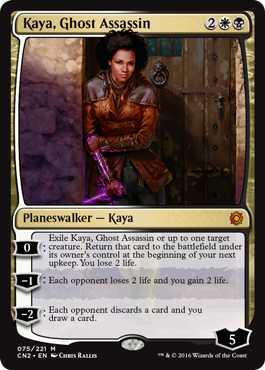
Conspiracy: Take the Crown previews start soon, and we’ve already seen what is sure to be one of the coolest cards in the set: Kaya, Ghost Assassin! I love Kaya, but I’d be careful of using Dack Fayden as too much of a barometer when thinking about her future value. The fact that Conspiracy cards aren’t legal in Standard or Modern is a huge deal, and I doubt Kaya will make the same sort of impact in Vintage and Legacy that Dack did. Casual and Commander players will still want her, but expect an eventual price tag closer to $15 than $30 unless I’m wildly underrating her in Magic’s oldest formats.
Comments from Last Week
I heard there were talks of creating a new format which lies somewhere between Modern and Standard. Have you heard anything about this?
– Kevin Johnstone
In terms of direct evidence, Kevin, I haven’t heard anything that would make me think Wizards of the Coast is planning a new format like this. In fact, most of the player base seems to believe that a format where the line is drawn somewhere between Legacy and Modern is more likely at the moment.
That said, it seems inevitable that a format like this will come around eventually, right? If we assume that Magic will be around for another twenty years, which seems conservative barring some sort of societal collapse, you have to believe that a new format will be created to bridge the Standard/Modern gap.
Eighth Edition was released when I was in high school. I’m thirty years old now. The vast majority of people playing now have no memory of, say, Affinity when it was Standard-legal. There is always room for a format that plays off nostalgia from the past generation of top decks while casting away ancient history.
Will that format be created soon? I don’t think so. No one is calling for it right now, and the lead-up to Modern was filled with speculation about a format to bridge that gap. I’d say we’re looking at a minimum of three years before Neo-Modern or whatever is created. In order words, you don’t need to worry about investing in it any time soon.
It’s worth noting that there are three Limited Grands Prix scheduled for May 5-7 next year. I’m pretty sure the last time there were three Limited GPs in one weekend was for the release of Modern Masters 2015. [Could this be release weekend for Modern Masters 2017?]
– Dan Nelson
I don’t think so, Dan. There were three Limited GPs on the weekend of January 29th this year, one each in Canada, Japan, and Mexico. Same with the weekend of April 15th in the USA, Spain, and China. Same with the weekend of July 29th in Canada, Sweden, and Australia. A bummer—the USA Grand Prix on May 5-7 next year is in Richmond, which is drivable for me.
I think the lack of Grand Prix Vegas being tied to a Modern Masters release (and the lack of a big GP for Eternal Masters) speaks to WotC’s desire not to overprint those cards. If they do a Masters set every year, they are going to churn through every exciting reprint very quickly unless they keep the supply low enough for, say, Tarmogoyf to still be expensive enough to sell a $10 pack every two years. They can’t lower the supply to individual shops much more without really upsetting players across the world, so scaling back the GPs—where massive amounts of product are opened in a very short time—is a relatively low-impact way to stem the bleeding. I do expect we will see another Masters GP in Vegas, but don’t expect it every year, or even every other year.


